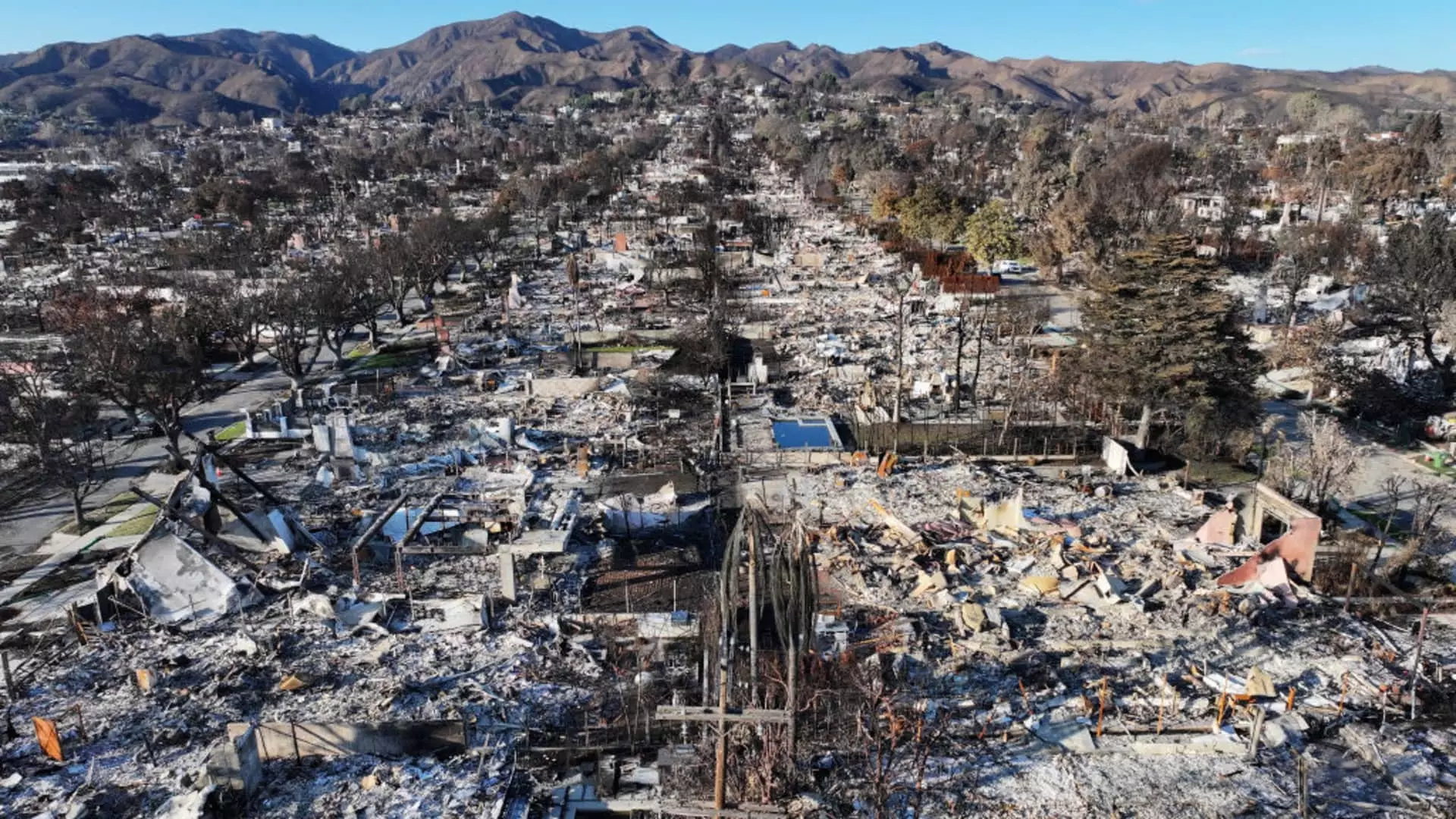The sheer ferocity of nature was on full display with the recent wildfires in Los Angeles, and the financial repercussions are reverberating across the reinsurance sector. Two of Germany’s largest reinsurers, Munich Re and Hannover Re, witnessed astonishing losses as a result of claims linked to these catastrophic fires. The $1.9 billion loss in the first quarter alone canvasses an unsettling picture of how vulnerable and interconnected the global financial ecosystem has become when faced with the wrath of climate change.
As a central player, Munich Re, the largest reinsurance entity globally, reported an eye-watering expectation that the claims arising from the wildfires could tally as high as 1.1 billion euros. In conjunction, Hannover Re, ranked third in size, revealed it faced significant net individual losses amounting to 631.4 million euros. This alarming trend highlights the fragility of companies that, while providing a safety net for insurance providers, are acutely exposed to natural disasters intensified by a changing climate.
The Nature of Reinsurance and Its Pitfalls
Reinsurance, by its very design, is there to cushion the blows dealt by largescale tragedies. However, it is precisely this system that can leave reinsurers unprepared for the kind of chaos unleashed by the Los Angeles wildfires. Typically, these companies only step in after the primary insurers absorb hefty losses that exceed around 400 million euros ($444.4 million). This layered structure arguably makes reinsurers vulnerable to a backlog of immense claims when disasters strike, thereby testing their capacity and management strategies.
Recently, the wildfires served as the largest single claims event within Munich Re’s property-casualty segment, pushing overall claims expenditures more than double—an alarming rate that led to a dramatic 72% reduction in quarterly net profit year-on-year. The Global Specialty Insurance division of Munich Re faced a similarly grim fate, its net profit plummeting by a staggering 95%. These figures serve as a grim reminder of the risks involved in juggling profit forecasts alongside an increasingly volatile climate.
Resilience vs. Fragility: The Dual Narrative
Despite the losses, Munich Re’s Chief Financial Officer, Christoph Jurecka, maintains a narrative of resilience. Describing the company’s determination to uphold a profit guide of €6 billion for 2025 amid “favorable market conditions,” one must wonder: is this outlook rooted in optimism or denial? While prudent management is indeed a virtue, facing a reality riddled with natural calamities requires more than mere resilience. The systemic implications of these claims could signal that no amount of “prudent management” can safeguard against the wrath of climate change and the financial turmoil that follows.
Moreover, stock market reactions echoed the grim reality experienced by these companies, as both Munich Re and Hannover Re saw their shares tumble by about 4%. The reinsurance market’s performance has entered a period where climate-induced risks are amplifying operational costs, suggesting that this industry may not recover as swiftly as those in more stable sectors.
Mixed Analysis from Financial Analysts
The sentiment around these insurance giants is decidedly mixed. Analysts from RBC Europe expressed a pessimistic view of Munich Re, highlighting that despite a less-than-expected total loss calculation, the company’s results fell short of market consensus. Analysts often wield influence over investor behavior, and the negative sentiment surrounding Munich Re cannot be underestimated. Meanwhile, on a different front, Deutsche Bank opined favorably on Hannover Re, praising its robust investment performance that surpassed expectations.
These competing narratives illuminate the complex web of perception and market influence that can significantly affect the financial trajectories of these reinsurers. With such differing opinions resonating in the financial corridors, one wonders how much faith investors genuinely possess in the leadership steering these companies through uncharted territory.
As these reinsurers grapple with the financial fallout, the specter of climate change looms larger. The interconnectedness of nature with economic stability is becoming increasingly irrefutable. The era of complacent profit forecasts may be coming to an end, demanding that reinsurers not only brace for volatility but innovate and strategize for an uncertain future driven by environmental realities. It is not merely about the pressing financial data; it is about recalibrating perspectives and actions in a world where the climate tells an unyielding narrative.

